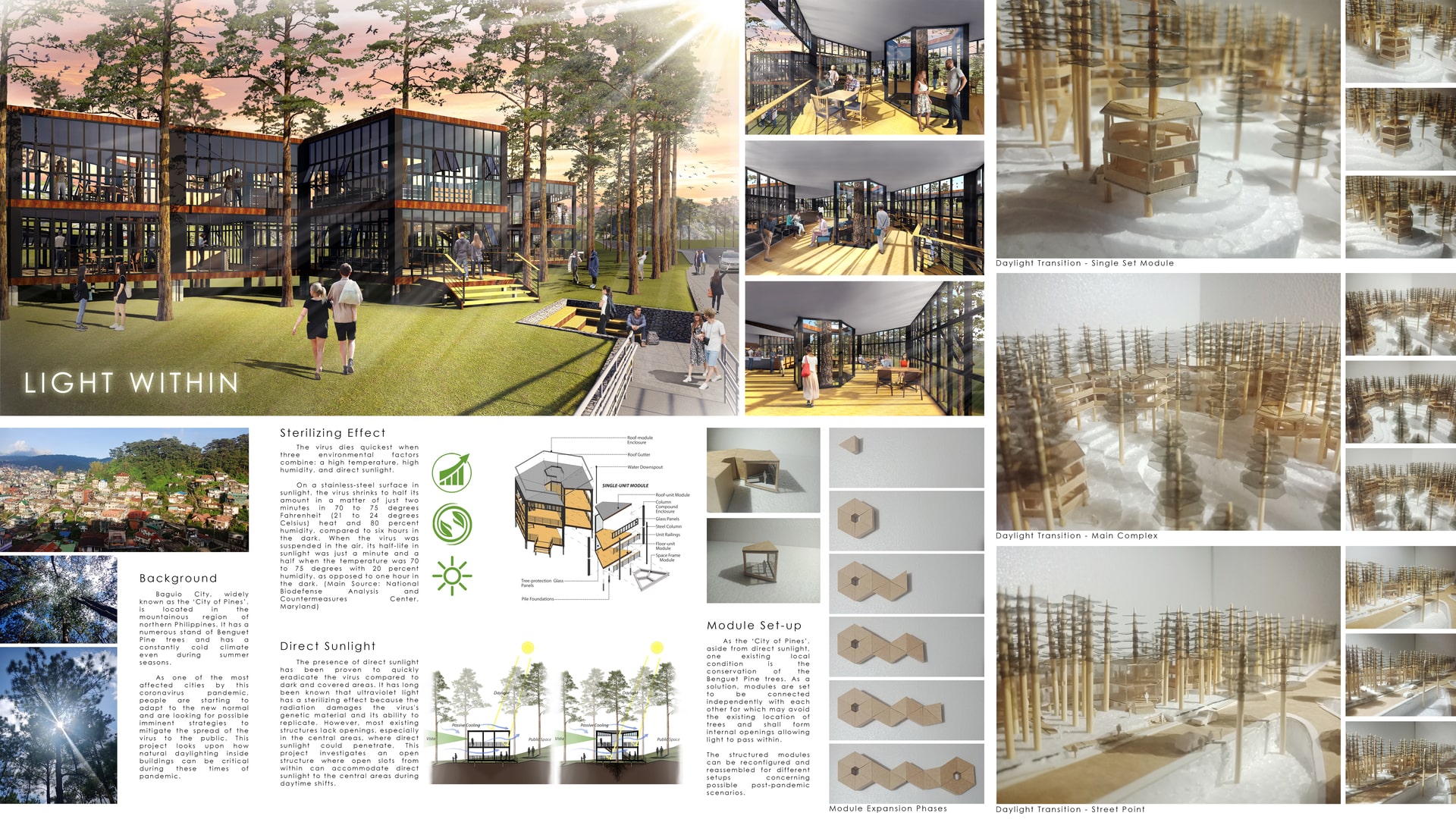Project Description
Background Baguio City, widely known as the ‘City of Pines’, is located in the mountainous region of northern Philippines. It has a numerous stand of Benguet Pine trees and has a constantly cold climate even during summer seasons. As one of the most affected cities by this coronavirus pandemic, people are starting to adapt to the new normal and are looking for possible imminent strategies to mitigate the spread of the virus to the public. This project looks upon how natural daylighting inside buildings can be critical during these times of pandemic. Sterilizing Effect The virus dies quickest when three environmental factors combine: a high temperature, high humidity, and direct sunlight. On a stainless-steel surface in sunlight, the virus shrinks to half its amount in a matter of just two minutes in 70 to 75 degrees Fahrenheit (21 to 24 degrees Celsius) heat and 80 percent humidity, compared to six hours in the dark. When the virus was suspended in the air, its half-life in sunlight was just a minute and a half when the temperature was 70 to 75 degrees with 20 percent humidity, as opposed to one hour in the dark. (Main Source: National Biodefense Analysis and Countermeasures Center, Maryland) Direct Sunlight The presence of direct sunlight has been proven to quickly eradicate the virus compared to dark and covered areas. It has long been known that ultraviolet light has a sterilizing effect because the radiation damages the virus's genetic material and its ability to replicate. However, most existing structures lack openings, especially in the central areas, where direct sunlight could penetrate. This project investigates an open structure where open slots from within can accommodate direct sunlight to the central areas during daytime shifts. Module Set-up As the ‘City of Pines’, aside from direct sunlight, one existing local condition is the conservation of the Benguet Pine trees. As a solution, modules are set to be connected independently with each other for which may avoid the existing location of trees and shall form internal openings allowing light to pass within. The structured modules can be reconfigured and reassembled for different setups concerning possible post-pandemic scenarios.
